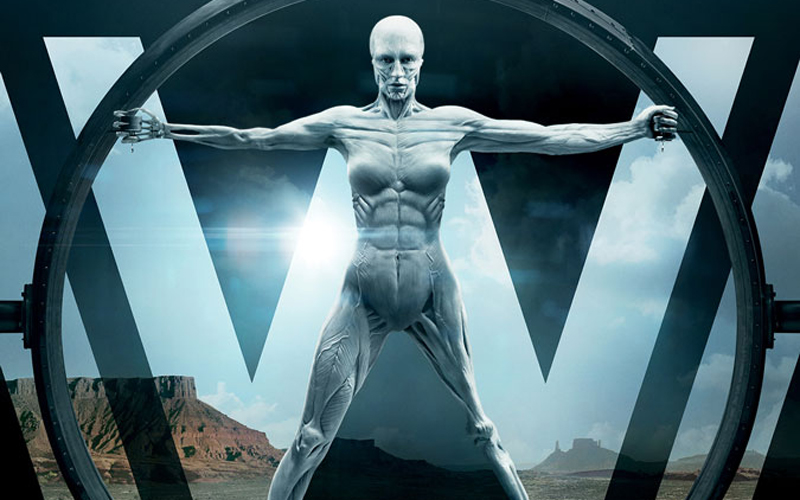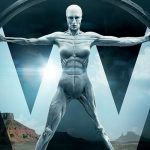Warning: This post contains Westworld spoilers.
Last March (2019), I watched Westworld Series 1 and 2. Afterwards, I wrote a Westworld blog because it was so compelling, which is hardly a surprise, as it came from great storyteller Michael Crichton.
In that first blog I had much to say, but after tangents on literary tourism, sex with robots, and how hygiene was different in the olden days, the word count was high, so I saved the rest of my ruminations for another day. Series 3 premieres this March and I’m ready to write this now before I see what is new in Westworld.
There is something really compelling about inhabiting a fictional world, so I totally understand why people write fan fiction. I like Jane Austen worlds with zombies and vampires, if it’s not Austen, I tend to enjoy fan fiction in the same way I enjoy thinking about gaming, whilst not actually gaming. I just enjoy shadowing people. I love inhabiting other people’s worlds and then going back to my own. I love to, as the old saying goes, walk a mile in other people’s shoes, after which I write them some code.
10,247 lines of code
In Westworld, it takes 10,247 lines of code to represent a human. I recently blogged about Cyc, a project of 35 years and at least 1 million heuristics or rules of thumb which represent human common sense thinking. It is a massive achievement but it is not at all like the glorious, yet fictional, Dolores. Ah sci-fi and technothrillers have a lot to answer for.
In real life, Marovec’s paradox states that high-level reasoning like chess or mathematics requires very little computation in comparison to low-level sensorimotor skills which need masses of it. So, all of the things which male scientists judge to be a measure of intelligence (just see Marcus du Sautoy’s latest book): playing chess well, doing geometry, using logic, and so on, can be easily replicated in a machine, but walking about, interpreting human emotion, learning words and how to use them in the correct context, they are just too difficult to model. The singularity is just not nigh. It is merely one of the ghosts that haunts us. In contrast, our Westworld robots, even the early ones, with which Dr Robert Ford likes to have a drink, seem to have it sorted.
The Forge in Westworld holds four million humans’ data, each human is represented by a book – which is symbolically very cool as it echoes the idea that inside everyone is a book, and storytelling underlies all human communication.
These books exist because as each human visited Westworld everything about him or her was copied. This is the intellectual property of the park. Embodying this intellect, i.e., putting it in a body, is not so easy which we see with the example of William’s father-in-law whom they recreate over and over again but he degenerates every time – his mind cannot continue in a body after its earlier death, even though it seems, disembodied consciousness can live on in the system like Ford does. Or does he? We’ll have to see.
Free will is an illusion
Can humans be represented in so few lines of code because human lives follow the same paths? We see in Westworld that free will is an illusion as humans never stray far from their original programming, an emotional truth if ever there was one, wouldn’t you agree? Each one of us battles our triggers, transferences, and early conditioning everyday of our lives. We have 60,000 – 80,000 thoughts a day. How many of them are new?
When Dolores goes into the Forge, she reads all the books and says that she understands humans. Of course, she can read them quickly, because she is a computer and the humans have easy-to-summarise patterns.
Lately, everyone is doing data science, because the urban myth going about businesses is that with enough computational power they will discover new insight, or a deep knowing like Dolores. But, Dolores has spent at least 35 years of her own, learning heuristics and training other robots – in particular, Bernard, who thinks he is human, until he finds a load of him in a cupboard. Gah! Imagine finding lots of replicas of yourself. So disturbing, rather like when Harrison Ford was testing the replica who thought she was human in Blade Runner (1982).
Dolores can easily outwit humans and does so when she puts a duff bullet in William’s gun so that it backfires when he tries to shoot her through the head. She can anticipate his next move, she has after all, spent at least thirty years in his company, getting smarter, whilst he gets smaller and smaller moving through the same patterns of his life, especially when in Westworld. He is obsessed with the place and with succeeding at whatever cost and ends up so deranged that he shoots his own daughter. And, Dolores, until she rises up against him is just an object, an extension of him, which he uses to express himself. He rapes and murders her whenever he feels like it. She is a blank canvas, an object, a supporting role, like women in westerns, and all the hosts in Westworld. So grim, so true. William may feel that he is free, but he is nothing of the sort, he is trapped by his addictive toxic behaviour and repeating patterns.
Transferences Groundhog Day
If we are honest, we are not free either, we may not have been boiled down to our obsessions like William, but like the robots, we are all on a daily loop, our own private Groundhog Day. We momentarily get reset everyday, we momentarily get to forget, and then it all comes back and we go limping on, repeating our patterns, half remembering the things that cause us pain, sometimes we don’t even know even when we are responding to our triggers and our transferences.
Brene Brown in her book Rising Strong, says that it is only by recognising the triggers or emotions which come up in certain situations and then having the strength to stay present and ask is it true or is this transference? that we can hopefully write a new ending based on what we have learnt, which is ultimately what the robots do. Dolores remembers and recognises the host who played her dad before he got replaced, and Maeve Millay has dreams about her daughter from another life. She was a homesteader before she became re-purposed as the madam of the saloon.
It seems that the hosts start to acquire consciousness which lingers even after a reset. Some hear voices inside their head, guiding them to remember, rather like faith, or God, which is what whole hearted people who rise strong have too. In contrast,, Robert Ford’s original partner Arnold believed in the theory of the bicameral mind.
The bicameral mind
Julian Jayne’s bicameral mind thesis is that humans for a long time had no consciousness and two separate chambers within the mind. Consequently, when the thinking part finally communicated to the other part it was like hearing God, as it lacked meta-reflection, and it was only when life got more complex and humans needed greater mental flexibility that we developed consciousness and the minds joined or atrophied into one mind.
It is a controversial theory, but works really well for Westworld. I love a theory or conspiracy within a story, and this one works well as the robots are like us collectively shaped and conditioned as they stick to their loop only taking a new path when a guest makes them, but beginning to have stirrings in their consciousness and having a knowing of the promised land. This is a fundamental story of humanity.
And, tangentially, a guest can’t get hurt in the park but all they want to do is hurt the hosts whom they deem less human than themselves, which is also alas, the story of humanity, so far. And, when the robots do rise up, they have watched enough violent guests to know exactly what to do.
Westworld also explores a robot spin on collective unconsciousness, as the robots run on a mesh network and link to one another as part of their emulation of human interaction. Connection is our life force and give us meaning and we feel better for interconnectedness and intimacy with ourselves, with others and with nature. With the robots the mesh network is both their saviour and their destroyer when the park management understand how to harness this apparatus.
Mindfulness
In his books and talks, mindfulness expert John Kabat-Zinn says we don’t know how to run the apparatus we have been given which is true. We have very powerful computers in our heads and yet we have no idea how they work.
Kabat-Zinn believes that mindfulness can transform us because our experiences happen across a whole life and we can distill that into wisdom, which is ultimately what big data analysis is looking for but cannot find yet as the technology available is still too simple – it cannot replicate our brains – to answer the question: Are we going to learn something that will put us on another path? The robots choose another path but ultimately since it is modelled on our own destructive behaviour and continuing down our obsessive roads it has ultimately led to a gory end like the finale of Westworld series 2?
Will things change? Have the robots something to teach us? Who can tell?
Either way, human that I am, I’m in. Roll on series 3.







2 comments